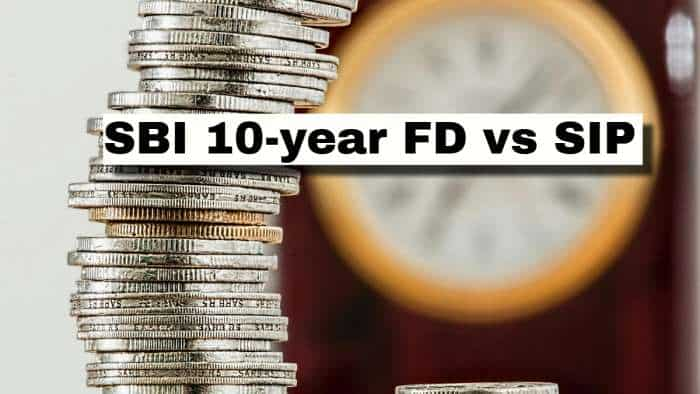PPF vs NPS: Very detailed comparison for retirement fund - EXPLAINED
PPF vs NPS: Public Provident Fund (PPF) and National Pension System (NPS) are some of the most popular retirement oriented schemes.

PPF vs NPS: Public Provident Fund (PPF) and National Pension System (NPS) are some of the most popular retirement oriented schemes. According to tax and investment experts, PPF account helps an investor fetch income tax exemption on up to Rs 1.5 lakh investment in a financial year and at the same time, it helps investors enjoy tax benefit on the PPF interest earned and the maturity amount. While in the NPS, the investor has tax exemption on up to Rs 1.5 lakh investment in one financial year and then one has to pay income tax on 40 per cent annuity. Thus, NPS Scheme is not 100 per cent tax exempted like PPF. But, still, if someone has a slightly higher risk appetite, then NPS is better than PPF, they said.
Speaking on the PPF vs NPS; SEBI registered tax and investment expert Jitendra Solanki said, "PPF is completely a debt investment while in an NPS account, one has the liberty to choose a mix of equity and debt investment. In NPS, there are two accounts — equity and debt. In NPS, one can invest up to 75 per cent in equity. So, if a person has a slightly high-risk appetite, then one should go for 50:50 in both equity and debt that will help get around 10 per cent return in the long-term perspective."
See Zee Business Live TV Streaming Below:
Kartik Jhaveri, Director — Asset Management at Transcend Consultants said, "PPF interest rate is currently 7.1 per cent but it doesn't mean PPF is less attractive than NPS. It depends upon the risk appetite of the investor. If the risk appetite of an investor is low then 7.1 per cent PPF interest rate is much attractive for him or her instead of risk-oriented NPS as its return is market-linked."
Jhaveri said that NPS account holders enjoy income tax exemption on up to Rs 50,000 investment in a particular financial year. This benefit is exclusive from Rs 1.5 lakh Section 80C benefit. So, if a person has a low-risk appetite, then one should go for the first Rs 1.5 lakh investment in PPF account and rest Rs 50,000 in NPS choosing 50:50 ratio in equity and debt NPS accounts.
However, both experts agreed that if someone has a high-risk appetite, then a market-linked NPS account is a better option for them instead of a PPF account.
Get Latest Business News, Stock Market Updates and Videos; Check your tax outgo through Income Tax Calculator and save money through our Personal Finance coverage. Check Business Breaking News Live on Zee Business Twitter and Facebook. Subscribe on YouTube.
RECOMMENDED STORIES

LIC Saral Pension Plan: How to get Rs 64,000 annual pension on Rs 10 lakh one-time investment in this annuity scheme that everyone is talking about

Gratuity Calculation: What will be your gratuity on Rs 45,000 last-drawn basic salary for 6 years & 9 months of service?

Rs 1,500 Monthly SIP for 20 Years vs Rs 15,000 Monthly SIP for 5 Years: Know which one can give you higher returns in long term

Income Tax Calculations: What will be your tax liability if your salary is Rs 8.25 lakh, Rs 14.50 lakh, Rs 20.75 lakh, or Rs 26.10 lakh? See calculations

8th Pay Commission Pension Calculations: Can basic pension be more than Rs 2.75 lakh in new Pay Commission? See how it may be possible

SBI Revamped Gold Deposit Scheme: Do you keep your gold in bank locker? You can also earn interest on it through this SBI scheme

Monthly Pension Calculations: Is your basic pension Rs 26,000, Rs 38,000, or Rs 47,000? Know what can be your total pension as per latest DR rates
09:37 AM IST











 Post Office PPF Calculation: How much will you get by investing Rs 2,000, Rs 6,000, and Rs 10,000 monthly for 15 years?
Post Office PPF Calculation: How much will you get by investing Rs 2,000, Rs 6,000, and Rs 10,000 monthly for 15 years? PPF For Regular Income: How to get Rs 60,000/month tax-free income from Public Provident Fund?
PPF For Regular Income: How to get Rs 60,000/month tax-free income from Public Provident Fund? PPF For Regular Income: How to get Rs 1,20,000/month tax-free income from Public Provident Fund?
PPF For Regular Income: How to get Rs 1,20,000/month tax-free income from Public Provident Fund? PPF For Regular Income: How can you get Rs 12,87,575 annually tax-free income from Public Provident Fund?
PPF For Regular Income: How can you get Rs 12,87,575 annually tax-free income from Public Provident Fund? PPF For Regular Income: Can you get Rs 1,06,828/month tax-free income from Public Provident Fund?
PPF For Regular Income: Can you get Rs 1,06,828/month tax-free income from Public Provident Fund?